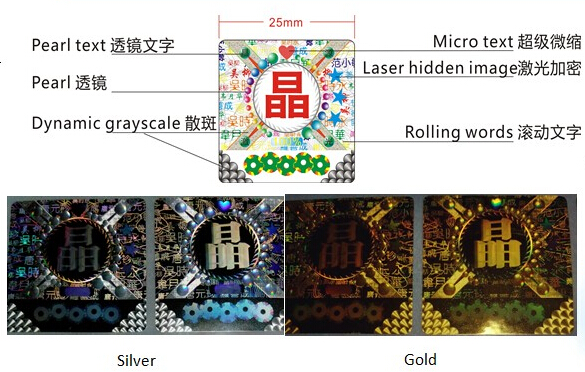Green food is a fashionable and sought after product after people's living standards have been improved. My county's Shangying Yingzui peach peach bulk agricultural products, the relevant state departments have identified as "China's olecranon honey peach hometown." How to aggressively promote the quality of products? This is where the responsibility of each worker lies. Otherwise it will certainly be eliminated by the market. How to produce green food? The relevant state management departments have issued relevant management regulations. Now I will briefly talk about what is called green food. What are the fertilizers used to produce green foods? What should you pay attention to? First, what is green food? Green food is pollution-free, safe, high-quality, nutritious food. In terms of quality, it is a production product that is higher than pollution-free food and slightly lower than organic food. (Pesticides can be used for nuisance-free foods, but residues and time of use must be controlled. Organic foods are basically natural foods, organic foods are used for green foods, and pesticides are also biological pesticides). Second, how to use fertilizer for producing green foods, pay attention to those issues: In order to ensure the quality of green food, it is necessary to reasonably select and use production materials such as fertilizers and pesticides to prevent the pollution of fertilizers and pesticides on food produced. The types of fertilizers used are: 1, farm fertilizer It refers to the various organic fertilizers used on the spot and in situ. It consists of a large number of biological substances, animal and plant residues, excrement, and biological waste. Including compost, manure, manure, biogas fertilizer, green manure, crop straw fertilizer, mud fertilizer, cake fertilizer and so on. 1•1 Compost A variety of straw, deciduous, mountain grass as the main raw material, and mixed with human dung and a small amount of mud, aerobic microbial decomposition of a class of organic fertilizers. 1 • 2 fertilizer All materials are basically the same as compost, but they are only organic fertilizers that have been fermented by microorganisms under waterlogging conditions. 1•3 manure Pigs, cattle, sheep, chickens, ducks and other excrement mainly livestock, and straw and other litter accumulation, and by microbial action of a class of organic fertilizers. 1·4 biogas fertilizer In a confined biogas digester, there are gaseous by-products of biogas production under biogas fermentation conditions. There are mainly two parts: biogas fertilizer and biogas residue fertilizer. 1•5 green manure The fertilizer is produced by overturning fresh plants, using them in different places, or using earthworms and heaps. Mainly divided into two major categories of green bean material and non-bean material green fertilizer. 1•6 Crop Straw Manure With straw, straw, corn stalks, bean stalks, rapeseed rods and other direct return fertilizer. 1•7 Mud Uncontaminated river mud, pond mud, harbor mud, gully mud, wall mud, fire soil, etc. 1•8 cake fat A fertilizer made from various oil-bearing seeds and residues that have been pressed and deoiled. Such as rapeseed cake, cottonseed cake, bean cake, sesame cake, peanut cake, castor cake and so on. 2, commodity fertilizer Fertilizers that are sold in the form of commodities under the administration of the National Fertilizer Administration according to national regulations. Including commodity organic fertilizers, humic acid fertilizers, microbial fertilizers, organic compound fertilizers, inorganic (mineral) fertilizers, and foliar fertilizers. 2•1 Organic Fertilizer With a large number of animal and plant residues, excreta and other biological wastes as raw materials, processed commercial fertilizers are processed. 2•2 Humic Fertilizers The peat (charcoal) containing humic acid, lignite, and weathered coal are processed to produce a fertilizer containing plant nutrients. 2•3 microbial fertilizer Live microbiological preparations produced by culturing specific microbial strains. According to microbial fertilizers to improve the different elements of plant nutrition, can be divided into five categories: rhizobia fertilizer, nitrogen-fixing bacteria fertilizer, phosphorus bacteria fertilizer, silicate bacteria fertilizer, compound microbial fertilizer. 2•4 Organic Compound Fertilizer After detoxification treatment of livestock and poultry manure and other biological waste, add appropriate amounts of trace elements made of fertilizer. 2•5 inorganic (mineral) fertilizer The minerals are made in the physical or chemical industry and the nutrients are in the form of inorganic salts. Including mineral potassium and potassium sulfate, mineral phosphate fertilizer (phosphorus powder), calcined phosphate (calcium magnesium phosphate fertilizer, defluorinated phosphate fertilizer), lime, gypsum, sulfur and so on.
JingYuan offers security label and sticker for a variety of security applications to protect your products, event tickets, ID badges, etc.
The function as below:
1.Combat Counterfeiting and Fakes
3.Indicate Tampering
Our quality holograms feature affordable pricing and fast service.
Our holographic security stickers also give your company logo, product or special promotion a distinctive look, which will enhance your image.
Kindly see below design file and the hologram effect for your reference.
We can accept OEM order.
Just need your logo in AI file, CDR, EPS file, tks.
Security Hologram Label Security Security Hologram Label Security,Security Hologram,Hologram Security Stickers,Hologram Printing Label Shenzhen Tuteng Anti-Counterfeiting Co., Ltd. , https://www.holographicsticer.com
